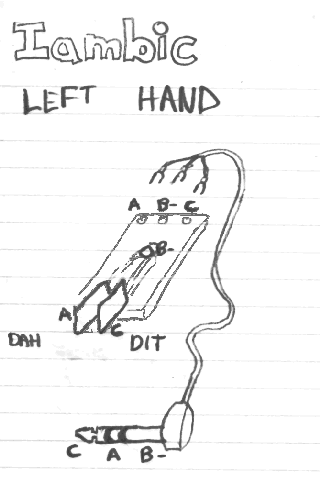Iambic Keyer: Difference between revisions
Jump to navigation
Jump to search
No edit summary |
No edit summary |
||
| Line 1: | Line 1: | ||
An iambic keyer consists of two separately actuated switches. | |||
Iambic operation is useful for sending characters that have alternating patterns | |||
such as a period or the letter C. | |||
[[File:iambic-left-hand320.gif]] | |||
==Mode A and B== | |||
Mode A and B refer to the way that a Morse code keyer handles iambic (squeeze) | |||
keying so first, let’s define iambic keyer operation. An iambic keyer will send an | |||
alternating sequence of dits and dahs as long as both the dit and dah switches are | |||
depressed or squeezed. | |||
The difference between mode A and B lies in what the keyer does when both | |||
paddles are released. The mode A keyer completes the element being sent when | |||
the paddles are released. The mode B keyer sends an additional element opposite | |||
to the one being sent when the paddles are released. | |||
Revision as of 19:59, 13 April 2017
An iambic keyer consists of two separately actuated switches. Iambic operation is useful for sending characters that have alternating patterns such as a period or the letter C.
Mode A and B
Mode A and B refer to the way that a Morse code keyer handles iambic (squeeze) keying so first, let’s define iambic keyer operation. An iambic keyer will send an alternating sequence of dits and dahs as long as both the dit and dah switches are depressed or squeezed.
The difference between mode A and B lies in what the keyer does when both paddles are released. The mode A keyer completes the element being sent when the paddles are released. The mode B keyer sends an additional element opposite to the one being sent when the paddles are released.
